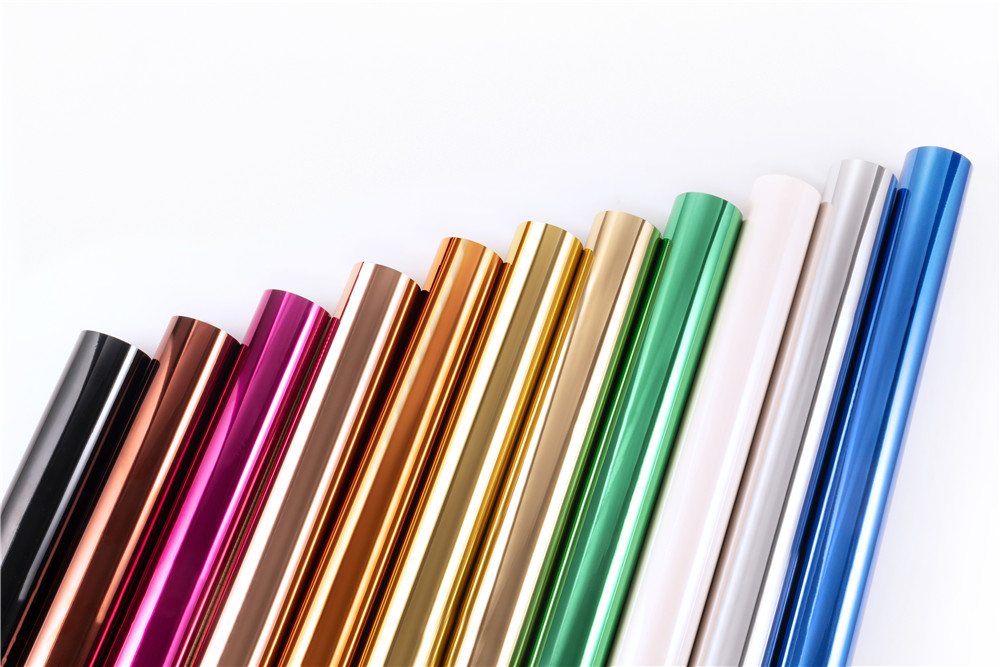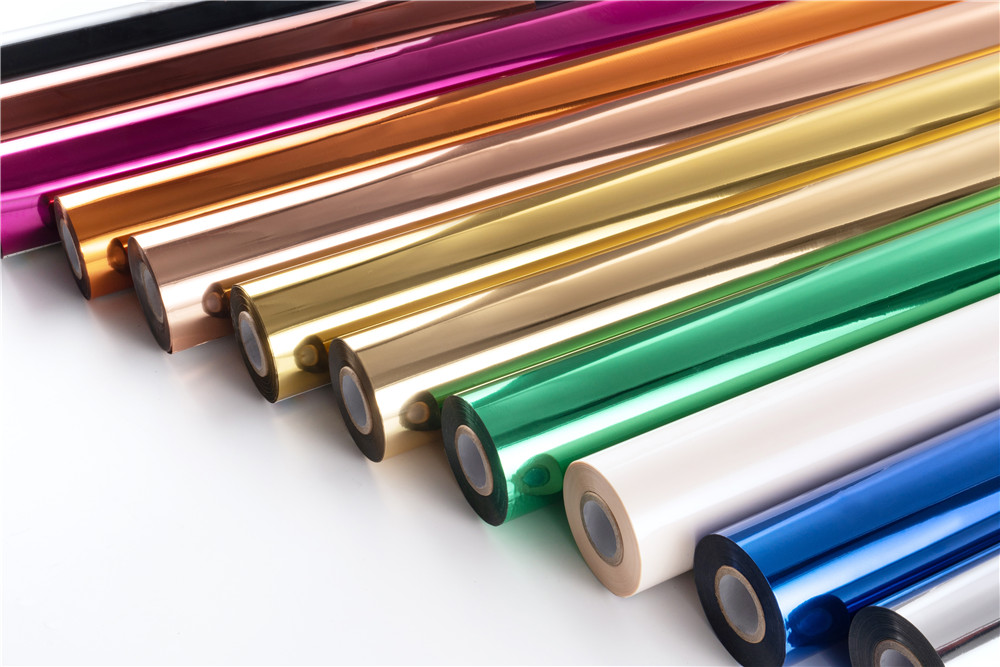How Is Hot Stamping Foil Applied to a Substrate?
Hot stamping foil is commonly used for packaging, labeling, stationery, and other decorative applications. It can be applied to a wide range of substrates, including paper, plastic, leather, and fabric.
Some examples of products that may be decorated with hot stamping foil include cosmetics packaging, greeting cards, book covers, and luxury goods such as handbags and wallets.
Hot stamping foil is a thin, flexible film made of a base material, a release layer, a color layer, and an adhesive layer. The base material can be made of polyester, PVC, or other synthetic materials.
The release layer is a coating that helps to separate the foil from its carrier film during the stamping process. The color layer contains pigments or metallic particles that give the foil its distinctive appearance. The adhesive layer helps to bond the foil to the substrate.
Hot stamping is a dry printing process that involves the use of a heated die to transfer the foil onto a substrate. The die is usually made of metal, and it is engraved with a design or pattern. The foil is positioned between the die and the substrate, and pressure is applied to the die, causing it to transfer the foil onto the substrate.
The hot stamping process involves several steps:
The substrate is prepared by cleaning and drying it to ensure that it is free from dirt, dust, and other contaminants.
The appropriate hot stamping foil is selected based on the desired design and substrate.
The foil is cut to the appropriate size and shape.
The die is typically heated to a temperature of around 150-200°C (300-400°F) depending on the type of foil being used and the substrate material.
The temperature must be carefully controlled to ensure that the foil adheres to the substrate without burning or melting.
The foil is positioned between the die and the substrate. The foil is placed on top of the substrate and positioned so that it covers the area where the design or pattern will be stamped.
The foil is held in place using tape or adhesive, or it may be fed into a hot stamping machine that automatically positions the foil.
Once the die has been heated, it is lowered onto the foil and substrate using a hot stamping machine. The machine applies pressure to the die, causing it to press the foil onto the substrate and transfer the design or pattern. The pressure is typically applied for a few seconds to ensure that the foil adheres properly.
After the foil has been transferred, the substrate is allowed to cool. The foil may be removed immediately, or it may be left in place and subjected to additional processing, such as embossing or laminating.
Hot stamping foil offers several advantages over other decorative materials, such as ink, paint, and paper. These include:
Hot stamping foil is durable and can withstand exposure to heat, water, and other environmental factors.
Hot stamping foil can be used on a wide range of substrates, including paper, plastic, leather, and more.
Hot stamping foil can be customized to create unique designs and patterns.
Hot stamping is a fast and efficient process that can be used to produce high-quality products in large quantities.

In conclusion, hot stamping foil is a versatile and attractive decorative material that can add value and visual appeal to a wide range of products. By carefully controlling the hot stamping process, manufacturers can create high-quality designs and patterns that are durable and long-lasting.
Some examples of products that may be decorated with hot stamping foil include cosmetics packaging, greeting cards, book covers, and luxury goods such as handbags and wallets.
What Is Hot Stamping Foil?
Hot stamping foil is a thin, flexible film made of a base material, a release layer, a color layer, and an adhesive layer. The base material can be made of polyester, PVC, or other synthetic materials.
The release layer is a coating that helps to separate the foil from its carrier film during the stamping process. The color layer contains pigments or metallic particles that give the foil its distinctive appearance. The adhesive layer helps to bond the foil to the substrate.

Hot Stamping Process
Hot stamping is a dry printing process that involves the use of a heated die to transfer the foil onto a substrate. The die is usually made of metal, and it is engraved with a design or pattern. The foil is positioned between the die and the substrate, and pressure is applied to the die, causing it to transfer the foil onto the substrate.
The hot stamping process involves several steps:
● Preparation
The substrate is prepared by cleaning and drying it to ensure that it is free from dirt, dust, and other contaminants.
● Selection of foil
The appropriate hot stamping foil is selected based on the desired design and substrate.
● Cutting of foil
The foil is cut to the appropriate size and shape.
● Heating of die
The die is typically heated to a temperature of around 150-200°C (300-400°F) depending on the type of foil being used and the substrate material.
The temperature must be carefully controlled to ensure that the foil adheres to the substrate without burning or melting.
● Positioning of foil
The foil is positioned between the die and the substrate. The foil is placed on top of the substrate and positioned so that it covers the area where the design or pattern will be stamped.
The foil is held in place using tape or adhesive, or it may be fed into a hot stamping machine that automatically positions the foil.
● Application of pressure
Once the die has been heated, it is lowered onto the foil and substrate using a hot stamping machine. The machine applies pressure to the die, causing it to press the foil onto the substrate and transfer the design or pattern. The pressure is typically applied for a few seconds to ensure that the foil adheres properly.
● Cooling
After the foil has been transferred, the substrate is allowed to cool. The foil may be removed immediately, or it may be left in place and subjected to additional processing, such as embossing or laminating.
Advantages of Using Hot Stamping Foil
Hot stamping foil offers several advantages over other decorative materials, such as ink, paint, and paper. These include:
● Durability
Hot stamping foil is durable and can withstand exposure to heat, water, and other environmental factors.
● Versatility
Hot stamping foil can be used on a wide range of substrates, including paper, plastic, leather, and more.
● Customization
Hot stamping foil can be customized to create unique designs and patterns.
● Efficiency
Hot stamping is a fast and efficient process that can be used to produce high-quality products in large quantities.

In conclusion, hot stamping foil is a versatile and attractive decorative material that can add value and visual appeal to a wide range of products. By carefully controlling the hot stamping process, manufacturers can create high-quality designs and patterns that are durable and long-lasting.
